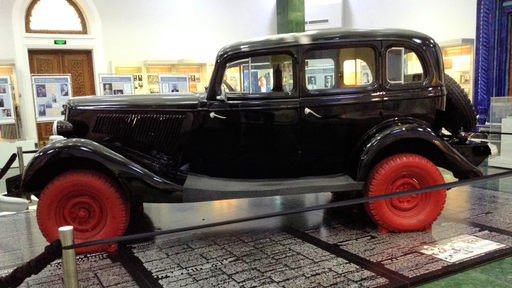Zulfiya Tursunova, an Associate Professor of Peace and Conflict Studies, presented her research, “Museums as a Truth-telling Force against Soviet State-led Repressions in Uzbekistan,” at the conference “Knowledge Production in/on Central Asia: Forms, Purposes and Practices.” The event was organized by the University of Fribourg in collaboration with the Central Asian Studies Network in Germany on Aug. 25-26, 2022.

The memorial complex “Shakhildlar Hotirasi” (Memory of Victims of Repressions), which opened to the public on May 12, 2000, is the country’s first memorial dedicated to victims of repression. It occupies a large territory and stretches to 17 hectares next to the Bozchu channel and opposite to the Tashkent TV tower. The memorial complex is comprised of the park, museum, and the memorial rotunda with the symbolic nephrite tomb. The memorial rotunda is 27 meters high, consisting of eight marble columns topped with a rounded turquoise dome. In the middle of the rotunda, under the dome, a memorial stone is placed oriented towards Mecca. The tombstone is engraved with the inscription, “The memory of those who died for their country will live forever” in Arabic, English and Uzbek. The rotunda is surrounded by lawns and colorful flower beds.
The Museum of the Memory of the Victims of Repressions is built in the Eastern traditional style surrounded by wooden columns with the national ornaments located further away. The museum was opened on Aug. 31, 2002, in the territory of “Shakhildlar Hotirasi.”
During the construction of the TV tower, the mass graves were found on the site and it was revealed that this was a place for holding trials of the repressed in the first half of the 20th century. Built to enhance public and community goals, the museum’s objectives are to study and learn about tragic events of the colonial period, facilitate research on the victims of repressions using public and private archives, publish and educate the public, and provide educational activities for young generations of Uzbekistan.
The exhibit tells in a collective voice the suppression of indigenous liberation movements by the Russian Empire and later by the Soviet authorities, the erasure of the intelligentsia under the slogan of struggle with kulaks and anti-Revolution activity, and Stalin’s repressions. Through the powerful voice of truth telling, museums weave complex patterns of community life through objects and people’s testimonies telling compelling narratives to the community to bring it together and heal and honor testimonies of peace, love, family, and community.

